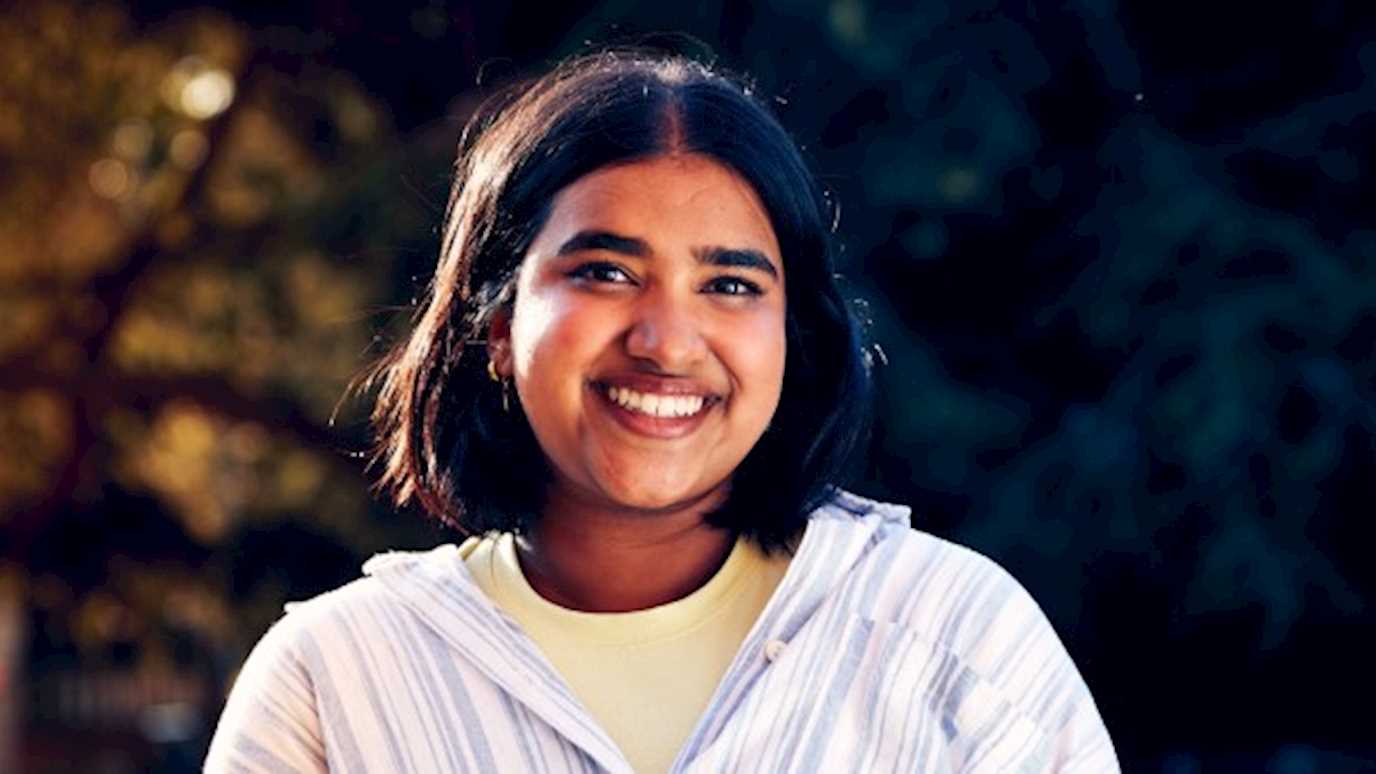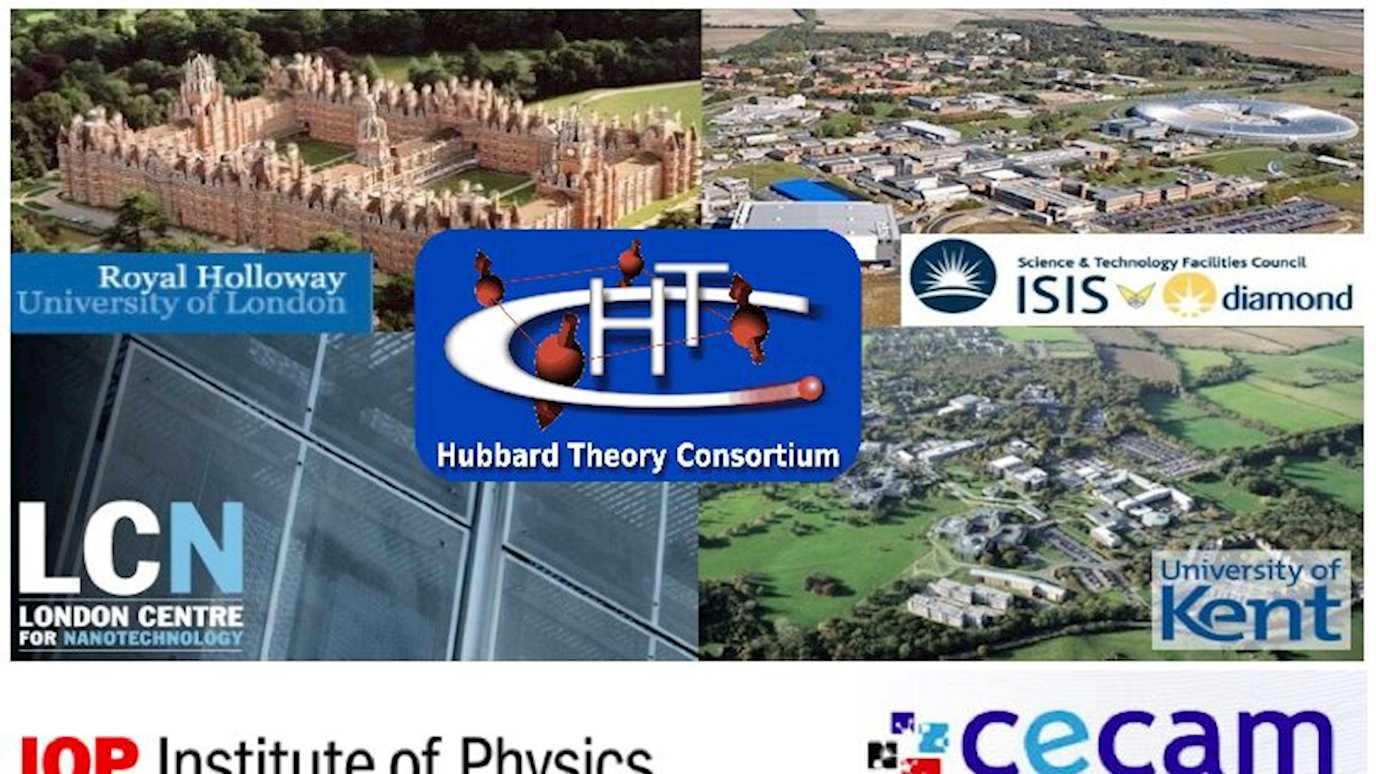The Condensed Matter Theory group at Royal Holloway Physics Department works on strongly correlated systems and cold atomic gases. Its members are also part of the Hubbard Theory Consortium.
About
Top row, left to right: Niclas Wennerdal, Evgeny Egorov, Eugene Balkind, Jan Gelhausen, Aldo Isidori; Middle row, left to right: Sarah Schroeter, Lorenzo Fratino, Anna Posazhennikova; Front row, left to right: Andrew Ho, David Heyes, Matthias Eschrig.
The Condensed Matter Theory group at Royal Holloway Physics Department works on strongly correlated systems and cold atomic gases. Its members are also part of the Hubbard Theory Consortium.
Research
| Cold Atoms | A.Ho, A. Posazhennikova |
| Theory of Strongly Correlated Electron Systems | M.Eschrig, A.Ho, G. Sordi, A. Posazhennikova |
| Superconductivity | M.Eschrig, G. Sordi, A. Posazhennikova, N. Pugach |
| Interface Physics and Spintronics | M.Eschrig, A. Isidori, N. Pugach |
| Functional Renormalisation Group | A. Isidori |
| Topological Order, Entanglement | M.Eschrig, A. Posazhennikova |
Members
Academics:
| Professor Piers Coleman | Director of HTC |
| Professor Matthias Eschrig | Deputy Director HTC |
| Professor Keith Refson | Professor |
| Dr Andrew Ho | Lecturer |
| Dr Anna Posazhennikova | Lecturer |
| Dr Giovanni Sordi | Lecturer |
Researchers:
| Dr Xavier Montiel | PRDA |
Students:
| Luke Rhodes | PhD Student |
| Damian Wozniak | PhD Student |
Alumni:
| Dr Evgeny Egorov | PhD 2018 |
| Dr Lorenzo Fratino | PhD 2017 |
| Dr Aldo Isidori | PDRA 2017 |
| Dr Eugene Balkind | PhD 2016 |
| Dr Francisco Aguilar Cordobes | PhD 2014 |
| Dr Una Kaharasanovic | PRDA 2013 |
| Dr Nataliya Pugach | PRDA 2014 |
| Dr Gabriele Sala | PRDA 2014 |
| Dr Priya Sharma | PRDA 2012 |
| Dr Niclas Wennerdal | PhD 2016 |
Publications
- Scaling of the Superconducting gap with orbital character in FeSe Rhodes, L.,Watson, M., Haghighirad, A. A., Evtushinsky, D. I., Eschrig, M. & Kim, T., In : Physical Review B. 98,18, p.1-6, 180503(R).
- Tuning of magnetic activity in spin-filter Josephson junctions toward spin-triplet transport Carusi, R., Massarotti, D., Campagnano, G., Pal, A., Ahmad, H. G., Lucignano, P., Eschrig, M., Blamire, M. G. & Tafuri, F. (Submitted) In : Physical Review Letters.
- Generation of pure superconducting spin current in magnetic heterostructures via nonlocally induced magnetism due to Landau Fermi liquid effects Montiel, X. & Eschrig, M. (Submitted) In : Physical Review B. vol. 98, No. 10, 104513.
- Kagome modes, a new route to ultralow thermal conductivity? Voneshen, D. J., Ciomaga Hatnean, M., Perring, T. G., Walker, H. C., Refson, K., Balakrisnan, G., Goff, J. P. arXiv:1809:06265.
- Exchange Field-enhanced superconducting spin currents Jeon, K., Ciccarelli, C., Kurebayashi, H., Cohen, L. F., Montiel, X., Eschrig, M., Komori, S., Robinson, J. W. A., Blamire, M. G. (Submitted) In : Nature Communications.
Opportunities
Post Doctoral Positions :
Project Title : Intertwined superfluid and density-wave orders in quantum many-body systems
This is a joint project between lead Dr. Andrew Ho (RHUL) and Dr. Derek Lee (Imperial College London) funded by the Leverhulme Trust, for one postdoctoral position for up to 3 years at RHUL, and one PhD studentship for 3.5 years at Imperial College London. Nominal start date is middle of January 2020. Interested persons should contact Drs. Ho and Lee with a CV as soon as possible.
Project Description :
What happens when different kinds of order occur at the same time in the same material? While familiar examples of magnetism or superconductivity, superfluidity are by now well understood, it is much less clear what happens when multiple orders compete or co-exist in the same material. Once different types of order come in play, different scenarios may occur. They can compete so that only one form of order survives for a given set of system parameters. Alternatively, we have multiple orders for the same system parameters. Then the orders may coexist simply independently of each other, or they may intertwine, meaning one type of order can be converted continuously into the other type. We aim to study the basic question: what is the theoretical framework that could encompass the complex interplay of physical effects in these scenarios?
A tantalising glimpse into novel properties of an intertwined system is offered by the experiment, done at RHUL, on two layers of helium-4 atoms plated on a flat graphite substrate [1]. The surprise was that there is no sign of the signature of the BKT theory, which is a sudden loss of superfluidity at a critical temperature. Our phenomenological modelling in [1] suggests that this superfluid is close to becoming a tightly packed solid. We thus hypothesize that the lack of the BKT transition is due to the intertwining of the superfluid and solid (density wave) order parameters, forming a multi-component order parameter with an enhanced non-Abelian symmetry. As such, it costs no energy to ”rotate” between a predominantly superfluid order, into the opposite with predominant density wave order, and anything in between. This is analogous to the non-Abelian SU(2) symmetry governing the isotropic Heisenberg magnets: there, the relevant (intertwined) order parameters are the magnetisations in the three spatial directions, and one can freely rotate the magnetic order pointing in any direction in space without energetic barriers. Very recently, we constructed a simple model that shows such an intertwined superfluid and solid orders [2].
Beyond this helium system, the intertwined scenario may also hide behind the plethora of ordering phenomena in a growing list of strongly correlated electrons systems, in the search for functional materials. Examples include magnetism, density wave and superconductivity in High-Temperature Superconductors; magnetism, crystallinity and superconductivity in doped FeSe, ferromagnetism and spin density wave in NbFe2, and SDW and some still unknown order in URu2 Si2 .
Quite separately, in the field of quantum optics, the groups of Ketterle (MIT) and Esslinger (ETH) have recently reported evidence of supersolidity in trapped ultra cold atoms. This raises the exciting prospect that one can further engineer these systems to enhance the symmetry to an intertwined kind, by eg. using long-range interactions as we suggested [2].
In summary, we aim to explore the concept of intertwined orders, and to apply to these diverse quantum many-body systems.
Note that we are uniquely placed to confront theory with experiments as the helium experiments are done in-house in the groups of Profs J. Saunders, B. Cowan and Dr. A. Casey at RHUL. There are also local experts in theory and experiments in strongly correlated electron systems at RHUL: Prof. J. Saunders, Dr. A. Casey, J. Goff, Drs. P. Niklowitz, G. Sordi and L. Levitin, and regular Visiting Prof. P. Coleman.
- J. Nyeki, A. Phillis, A. Ho, D. Lee, P. Coleman, J. Parpia, B. Cowan and J. Saunders, “Intertwined superfluid and density wave order in two-dimensional 4He”, Nat Phys. 13, 455 (2017).
- S. Lieu, A.F. Ho, D. K. K. Lee, and P. Coleman, “p-Orbital Superfluid with S5 Manifold”, Phys. Rev. B 99, 014504 (2019).
PhD Positions :
PhD studentships are regularly available in the Condensed Matter Theory Group. Please contact any member of the Group for more information.




















